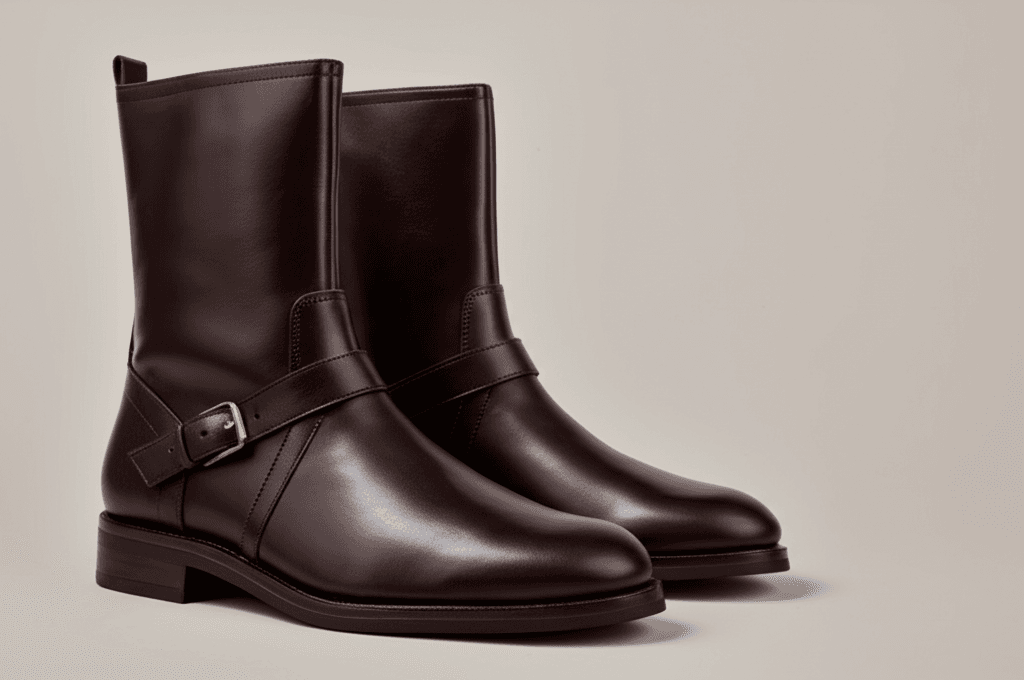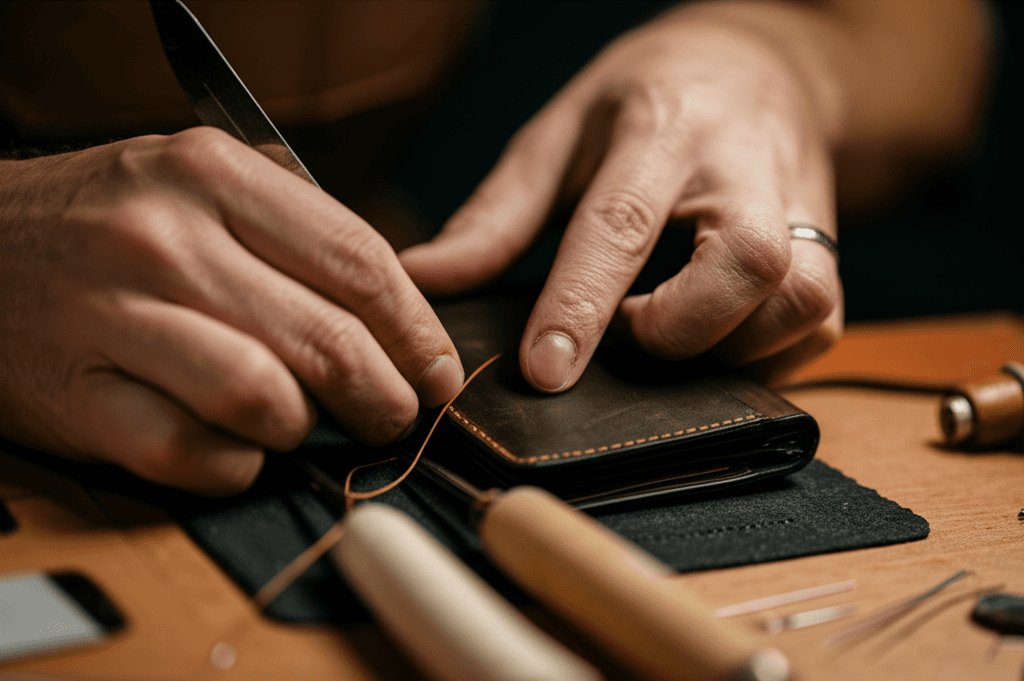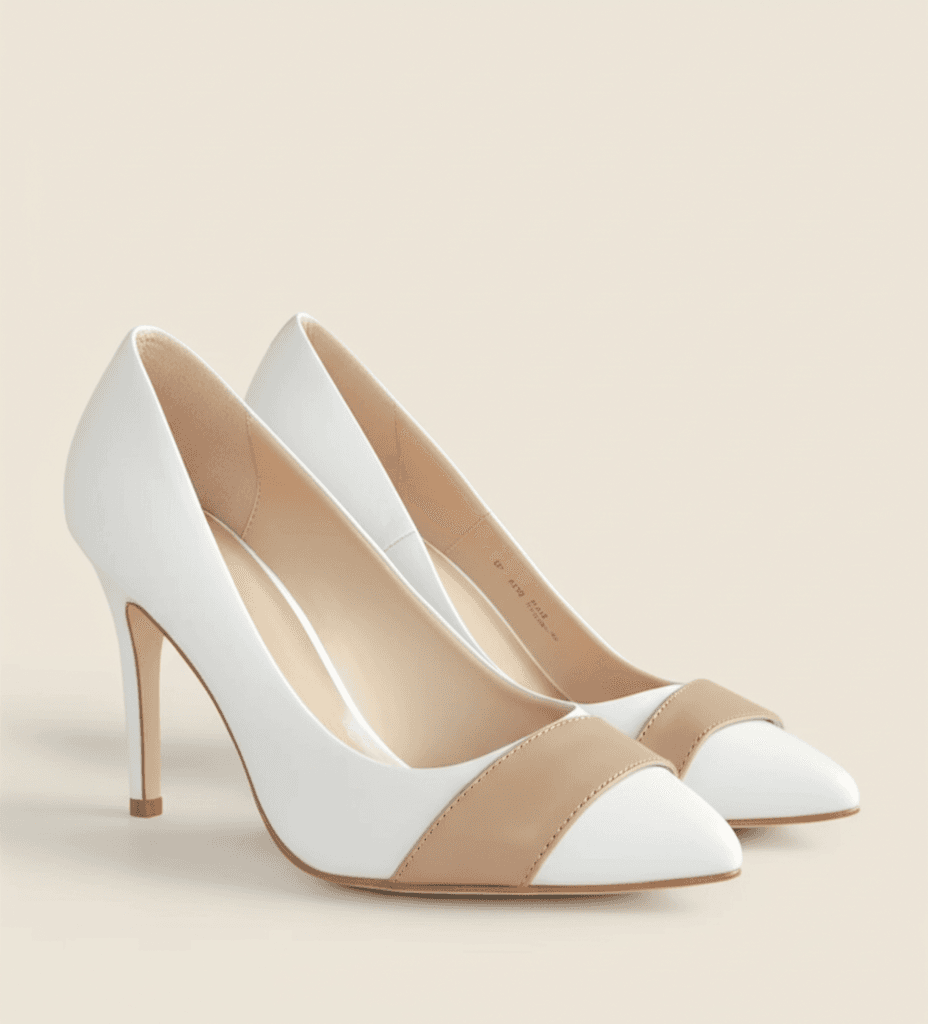
Complete Guide to Winter Leather Boot Care in Lebanon 2025
Why Lebanon's Winter Demands Special Leather Care
Lebanon's Mediterranean winter climate presents unique challenges for leather boots: frequent rain, humidity ranging from 60-75%, and temperature fluctuations between 10-18°C. Unlike dry climates, this moisture-rich environment requires proactive leather protection to prevent water damage, mold growth, and premature aging.
Pre-Winter Preparation (Essential Steps)
1. Deep Clean Before Season Starts
Before November rains arrive, thoroughly clean all leather boots using pH-balanced leather cleaner. Remove summer dust, dried sweat, and salt residue from last winter. This creates a clean base for waterproofing products to bond effectively.
2. Apply Waterproofing Treatment
Use a quality waterproofing spray designed for leather (not suede-specific). Apply 2-3 thin coats, allowing 24 hours between applications. Focus on seams, stitching, and the welt where water typically penetrates. Reapply every 3-4 weeks during rainy season.
Best waterproofing products for Lebanon's climate:
- Silicone-based sprays (breathable, lasts 3-4 weeks)
- Wax-based treatments (heavy-duty, lasts 6-8 weeks)
- Nano-protection sprays (modern, effective for 4-5 weeks)
3. Condition Thoroughly
Apply leather conditioner to restore oils stripped by summer heat. Well-conditioned leather is more flexible and water-resistant. Pay special attention to flex points (ankle, toe box) where leather bends.
Daily Winter Care Routine
When You Return Home
Step 1: Remove excess water immediately using absorbent microfiber cloths. Pat gently—never rub, which can drive water deeper into leather.
Step 2: Stuff boots with plain white paper (newspaper ink can transfer and stain). Change paper every 2-3 hours until boots are dry. This maintains shape and accelerates drying.
Step 3: Place boots in well-ventilated area at room temperature. NEVER near heaters, radiators, or direct sunlight. Heat causes leather to crack, shrink, and lose flexibility.
Drying time: 24-48 hours for complete interior drying in Lebanon's humid climate.
Weekly Maintenance
- Brush away dried mud and dirt with soft horsehair brush
- Check for salt stains (common in Beirut coastal areas)
- Apply light conditioning cream to keep leather supple
- Inspect soles for wear and damage
Dealing with Common Winter Problems
Salt Stains (Beirut Coastal Areas)
Lebanese roads, especially near Corniche and coastal highways, use salt during occasional freezing conditions. Salt creates white, chalky residue that damages leather.
Removal process:
- Mix 1:1 white vinegar and distilled water
- Dampen soft cloth with solution (not soaking wet)
- Gently wipe salt-stained areas
- Immediately wipe with plain water-dampened cloth
- Allow to air dry completely
- Apply leather conditioner once fully dry
Water Stains and Rings
If water stains appear, don't panic. Dampen the ENTIRE boot surface lightly with distilled water using a spray bottle. This redistributes moisture evenly, preventing ring formation. Let dry naturally, then condition.
Mold Growth (High Humidity)
Lebanon's winter humidity (60-75%) creates ideal mold conditions. If you spot white fuzzy growth:
- Move to well-ventilated outdoor area
- Mix 1:1 water and rubbing alcohol
- Wipe affected areas thoroughly
- Let dry completely (48 hours minimum)
- Apply antifungal leather protector
- Store with silica gel packets
Storage Solutions for Lebanese Climate
Daily Storage
- Use cedar boot trees (absorb moisture, maintain shape, prevent odor)
- Store in breathable dust bags (NEVER plastic—traps moisture)
- Keep 2-3 inches apart for air circulation
- Place silica gel packets nearby (replace monthly)
- Ensure good ventilation in closet
Long-Term Storage (End of Season)
When winter ends in March:
- Deep clean and condition thoroughly
- Stuff with acid-free tissue paper
- Insert cedar boot shapers
- Store in breathable fabric bags
- Add multiple silica gel packets
- Keep in cool, dry place (not humid basement)
- Check monthly for mold/moisture
Product Recommendations for Lebanon
Essential Winter Boot Care Kit
- Waterproofing spray: Silicone-based, reapply every 3-4 weeks
- Leather conditioner: Neutral color or matching tone
- pH-balanced cleaner: For regular cleaning
- Soft cloths: Microfiber (3-5 pieces)
- Cedar boot trees: Essential for moisture control
- Soft brush: Horsehair for dirt removal
- Silica gel packets: Replace every 4-6 weeks
- White vinegar: For salt stain removal
Total investment: 150,000-250,000 LBP (saves thousands in boot replacements)
Leather Type Specific Care
Smooth Leather Boots
Most common in Lebanon. Follow all standard care instructions above. Highly responsive to conditioning and waterproofing.
Suede and Nubuck Boots
More vulnerable to water damage. Requires:
- Suede-specific waterproofing spray (not leather spray)
- Suede brush for nap restoration
- Never use water-based cleaners
- Professional cleaning for severe stains
Patent Leather Boots
Water-resistant but can crack without care:
- Wipe with damp cloth after each wear
- No need for heavy conditioning
- Avoid petroleum-based products
- Store carefully to prevent creasing
When to Seek Professional Help
Visit a professional cobbler or leather specialist for:
- Severe water damage (leather hardening)
- Deep mold penetration
- Color transfer or permanent staining
- Sole separation or structural damage
- Annual professional deep cleaning (recommended)
In Lebanon, quality cobblers in Hamra, Achrafieh, and Jounieh offer leather restoration services. Annual professional care costs 50,000-100,000 LBP but extends boot life by years.
Cost-Benefit Analysis
Quality leather boots in Lebanon: $150-500 (2,250,000-7,500,000 LBP)
Proper winter care investment: $20-30/season (300,000-450,000 LBP)
Without care: Boots last 1-2 winters
With proper care: Boots last 5-10+ winters
Savings: $500-2,000 over boot lifetime (7,500,000-30,000,000 LBP)
FAQ: Winter Leather Boot Care
Q: How often should I waterproof my boots in Lebanon?
A: Reapply waterproofing every 3-4 weeks during rainy season (November-March). After heavy rain exposure, reapply within 48 hours.
Q: Can I wear leather boots in Lebanese rain?
A: Yes, with proper waterproofing. Avoid deep puddles and prolonged exposure. Quality full-grain leather handles rain well when protected.
Q: What's the best way to dry wet boots in Lebanon's humidity?
A: Stuff with paper, change every 2-3 hours, air dry at room temperature for 24-48 hours. NEVER use heaters or put in sun.
Q: How do I prevent mold in humid Lebanese winters?
A: Use cedar boot trees, store with silica gel packets, ensure good ventilation, and wipe boots dry after each wear.
Q: Should I condition boots before or after waterproofing?
A: Condition first, let absorb for 24 hours, then waterproof. This ensures leather is nourished before sealing.
Q: Are expensive boots worth it for Lebanese weather?
A: Yes. Quality full-grain leather boots ($200-500) last 5-10 winters with care. Cheap boots ($50-100) last 1-2 winters maximum.
Conclusion
Lebanon's Mediterranean winter climate demands proactive leather boot care. With proper waterproofing, regular cleaning, and smart storage, your premium leather boots from Manufact will serve you beautifully through many Lebanese winters. The investment in care products (300,000-450,000 LBP annually) saves thousands in replacement costs while maintaining your boots' appearance and comfort.
Visit Manufact at Al-Arz Highway Koura Plaza, Koūsha for expert advice on winter leather boot care and our selection of premium winter footwear designed for Lebanese climate.
--- ## Related Articles ### Mediterranean Climate Leather Care: Complete Lebanon Protection Guide 2025 **Highly Related** • Care & Maintenance Protect your leather goods in Lebanon's humid Mediterranean climate. Expert guide to summer heat, winter rain, salt air, and humidity protection for p... [Read More →](/blog/mediterranean-climate-leather-care-lebanon) ### Summer Leather Care: Protecting Your Goods from Middle Eastern Heat **Highly Related** • Care & Maintenance Essential guide to maintaining leather bags, shoes, and accessories during Lebanon's intense summer heat. Expert tips for preventing heat damage and c... [Read More →](/blog/summer-leather-care-middle-eastern-heat) ### How to Care for Your Leather Shoes During Lebanon's Rainy Season **Highly Related** • Care & Maintenance Protect your premium leather shoes during Lebanon's rainy season. Expert tips on waterproofing, cleaning, and storing leather footwear in humid weathe... [Read More →](/blog/leather-shoe-care-rainy-season-lebanon) ### Ultimate Leather Care Guide: How to Maintain Your Premium Leather Goods **Highly Related** • Care & Maintenance Learn professional techniques to keep your leather bags, shoes, and accessories looking pristine for years. Complete guide with expert tips.... [Read More →](/blog/ultimate-leather-care-guide) ### How to Break In New Leather Shoes Without Pain: Expert Methods **Highly Related** • Care & Maintenance Master the art of breaking in new leather shoes comfortably. Professional techniques to soften leather, prevent blisters, and achieve perfect fit fast... [Read More →](/blog/how-to-break-in-new-leather-shoes) ### Brazilian vs Italian Leather 2025: Complete Buyer's Guide for Lebanon **Related Topic** • Buying Guides Brazilian or Italian leather? Complete comparison for Lebanese buyers. Quality, price, climate suitability, and value analysis of Luiza Barcelos vs Eu... [Read More →](/blog/brazilian-vs-italian-leather-complete-buyers-guide)Tagged In
Enjoyed this article?
Visit our boutique at Al-Arz Highway Koura Plaza, Koūsha, Lebanon to experience our handcrafted leather collection in person.
Related Articles

Mediterranean Climate Leather Care: Complete Lebanon Protection Guide 2025
Protect your leather goods in Lebanon's humid Mediterranean climate. Expert guide to summer heat, winter rain, salt air, and humidity protection for premium leather.

How to Break In New Leather Shoes Without Pain: Expert Methods
Master the art of breaking in new leather shoes comfortably. Professional techniques to soften leather, prevent blisters, and achieve perfect fit faster.

كيفية تليين أحذية الجلد الجديدة بدون ألم: طرق الخبراء
تعلم أساليب الخبراء لتليين أحذية الجلد الجديدة بشكل مريح. نصائح مثبتة لتجنب البثور والألم أثناء عملية التليين.